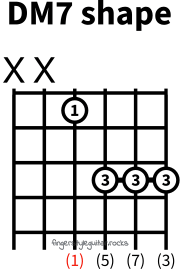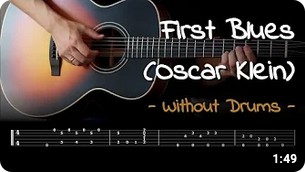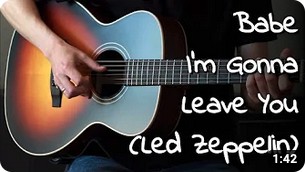CAGED major seventh chord shapes
With the CAGED system for major seventh chords you can play any major seventh chord in five different positions on the guitar fretboard. If you haven't already, please have a look at the introduction of the CAGED system.
The CAGED system for major seventh chords uses the open major seventh chord shapes CM7, AM7, GM7, EM7 and DM7, which haven't been introduced yet.
Major seventh chords contain a major chord plus the major seventh. They have much less tension than the (dominant) seventh chords and sound like Jazz, probably because they are often used in Jazz music.
CAGED pattern for major seventh chords
Here are the five major seventh chord shapes combined on the fretboard:

The numbers in the circles are the intervals / scale degrees. Please have a look at the introduction to intervals and chords if you haven't done so already.
Major seventh chord shapes
Playing all the notes of a given chord shape is often impractical or inappropriate. Below are commonly used versions of the major seventh chord shapes.
When in doubt: Here is an explanation of how to use movable chord shapes and here is help on how to read chord diagrams.
C major seventh shape
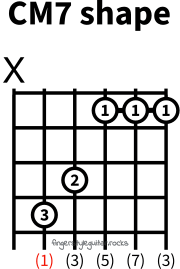
A major seventh shape
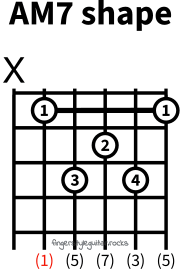
G major seventh shape
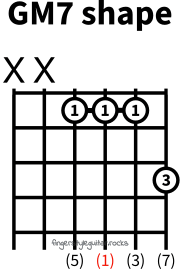
E major seventh shape

variation 1
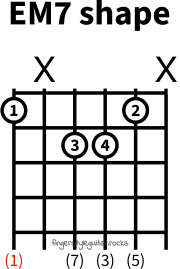
variation 2
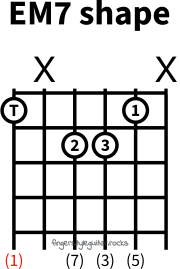
variation 3
D major seventh shape
